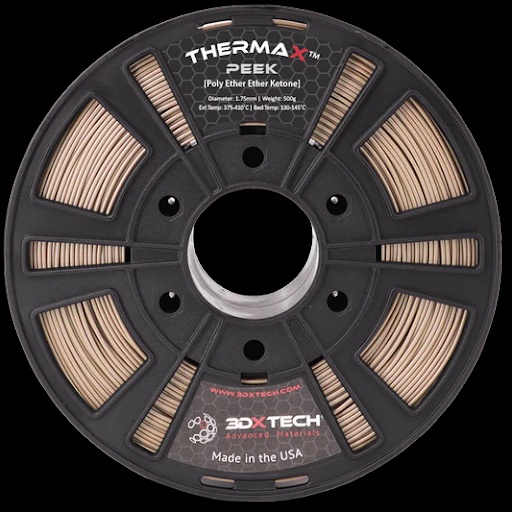In the realm of advanced manufacturing and 3D printing, materials play a pivotal role in determining the end products' feasibility, durability, and versatility. One such material that has been garnering significant attention in recent years is PEEK filament. Polyetheretherketone (PEEK) is a high-performance thermoplastic polymer known for its exceptional mechanical, thermal, and chemical properties. When processed into filament form for 3D printing applications, PEEK offers various possibilities across aerospace, automotive, medical, and beyond industries.
Understanding PEEK Filament
PEEK filament is derived from the raw PEEK polymer through a precise extrusion process. This results in a filament format compatible with various Fused Filament Fabrication (FFF) or Fused Deposition Modeling (FDM) 3D printers. This filament retains the intrinsic properties of PEEK, including high-temperature resistance (up to 250°C continuous use), excellent chemical resistance, low flammability, and superb mechanical strength comparable to metals like aluminum.
Applications Across Industries
- Aerospace: PEEK filament is revolutionizing aerospace manufacturing by enabling the production of lightweight yet incredibly strong components such as brackets, housings, and ducting systems. Its heat and chemical resistance make it ideal for aircraft interiors, engine components, and structural elements subjected to extreme conditions.
- Medical: In the medical field, PEEK filament creates biocompatible and sterilizable implants, surgical instruments, and patient-specific medical devices. Its radiolucency and compatibility with medical imaging techniques like MRI make it a preferred choice for orthopedic implants and spinal implants.
- Automotive: Automotive engineers are exploring PEEK filament to rapidly prototype engine components, sensors, connectors, and interior parts due to its high wear resistance, dimensional stability, and ability to withstand automotive fluids and temperatures.
- Industrial Manufacturing: PEEK filament finds applications in industrial settings for producing chemical-resistant containers, machine components, jigs, fixtures, and tooling. Its ability to maintain mechanical integrity under harsh chemicals and elevated temperatures makes it valuable in demanding manufacturing environments.
Advantages of PEEK Filament
- High-Temperature Resistance: PEEK filament retains its mechanical properties at elevated temperatures, making it suitable for applications requiring thermal stability and resistance to heat aging.
- Chemical Resistance: The inherent chemical inertness of PEEK makes it resistant to a wide range of chemicals, acids, and solvents, ensuring durability and longevity in corrosive environments.
- Mechanical Strength: PEEK filament exhibits high tensile strength, flexural strength, and impact resistance, allowing for the production of robust and functional end-use parts.
- Biocompatibility: In medical and pharmaceutical applications, PEEK filament's biocompatibility and sterilizability make it safe for prolonged contact with bodily tissues and fluids.
- Dimensional Stability: PEEK maintains tight tolerances and dimensional stability during and after 3D printing, reducing post-processing efforts and ensuring accuracy in complex geometries.
Challenges and Considerations
While PEEK filament offers numerous advantages, its adoption also presents challenges and considerations:
- High Processing Temperature: Printing with PEEK filament requires a 3D printer equipped with a high-temperature extruder (300°C to 400°C) and a heated build chamber (above 100°C) to prevent warping and ensure layer adhesion.
- Cost: PEEK filament is relatively expensive compared to standard 3D printing materials, primarily due to the material's quality, properties, and processing requirements.
- Printing Expertise: Successful printing with PEEK filament demands expertise in optimizing print settings, layer adhesion, cooling strategies, and post-processing techniques to achieve desired mechanical properties and surface finish.
Future Outlook
Despite the challenges, ongoing research and development efforts are focused on enhancing PEEK filament formulations, improving printing techniques, and expanding its compatibility with a broader range of 3D printers. As advancements continue, we can anticipate wider adoption of PEEK filament in critical industries, driving innovation, efficiency, and product performance to new heights. Among common filaments, PETG is easy to use and strong.
Conclusion
PEEK filament represents a game-changing material in advanced manufacturing and 3D printing, offering unparalleled properties that cater to demanding applications across diverse industries. As technology evolves and expertise grows, PEEK filament is poised to revolutionize product design, manufacturing processes, and end-use part performance, unlocking new possibilities and pushing the boundaries of what's achievable in modern manufacturing landscapes.


No comments yet